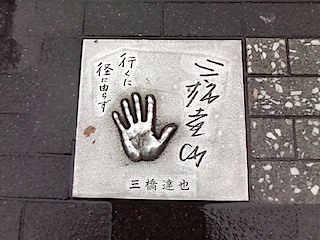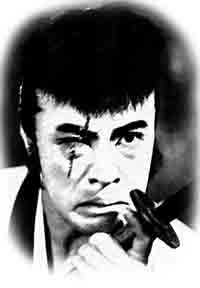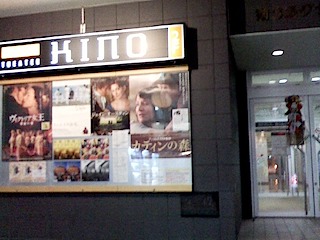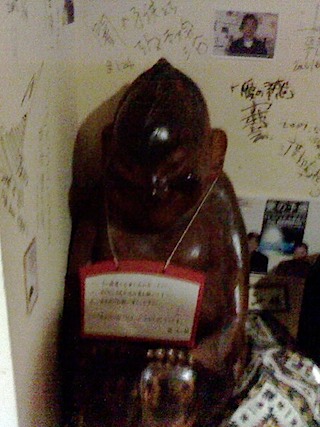It took a while, but I am very glad to announce that my new book, Visions of Japanese Modernity: Articulations of Cinema, Nation, and Spectatorship, 1895-1925, is finally out and available at booksellers like Amazon (you can also get it straight from the press). I would like to thank everyone, including those at the University of California Press, for their patience and support.
(you can also get it straight from the press). I would like to thank everyone, including those at the University of California Press, for their patience and support.
This took a while to realize. The first version was my dissertation, submitted over a decade ago. A lot has happened since then, including three other books and multiple jobs, but this work continued to change and evolve. Some of the original chapters got published elsewhere and disappeared from the manuscript (the one on novelizations and film criticism ended up in Word and Image in Japanese Cinema ; the section on national cinema ended up spread out between A Companion to the Anthropology of Japan and The Culture of Japanese Fascism
; the section on national cinema ended up spread out between A Companion to the Anthropology of Japan and The Culture of Japanese Fascism ); remaining chapters were refined, revised, and updated. It's inevitable that an author thinks more could have been done here and there, but people have waited long enough, and sometimes you just have to let your baby leave the nest.
); remaining chapters were refined, revised, and updated. It's inevitable that an author thinks more could have been done here and there, but people have waited long enough, and sometimes you just have to let your baby leave the nest.
The title changed too. I must confess I am not wholly satisfied with いt. It seems that publishers of Japan-related books think "modernity" sells, so that word is ending up on a lot of book covers these days. There are some in the field who even mistakenly think that is what the field is about (the review of my Kitano Takeshi book in the Journal of Asian Studies makes that mistake). My new book, in fact, is partially a revision of that view - or at least to its tendency to focus on only a certain narrative of modernity - even if the title doesn't express it as well as it could. It is essentially a discursive history, one clearly influenced by Foucault, which tries to understand the first thirty years of Japanese film history neither as a tale of a foreign modernity entering Japan and changing the culture, nor (à la Burch) as a case of film being inserted into and being shaped by a long-standing traditional culture. Rather, it is a more complex history of the concrete historical struggles that defined the medium and its cultural importance not only through the way films were made (a practice hard to judge these days since very few of the films remain) but also through how they were talked and written about in film criticism, scholarship, exhibition practices (such as the benshI), and even censorship. Such discursive actions have the power to articulate, shape, even create the object. Not only cinema, but "modernity" itself were not given phenomena, but were born of this struggle, one that was intimately tied to conflicts involving both class and nation in a transforming Japan. That is why I do not talk about "modernity" but different "modernities" that were promoted or demoted by different forces in discourse in an effort to define what Japan and its cinema should or should not be. The "visions" in the title, then, is not a presumption that modernity was inherently visual and that such a "visual culture" shaped modern Japan. Rather, given that there were other modernities (and cinemas) that were not visual but bodily, the "visions of modernity" are rather those of figures such as the pure film reformers of the 1910s who worked to define cinema and its modernity as visual - in part so as to suppress that bodily form of cinema. By looking at these complex, and often contradictory struggles, I believe we get not only a richer notion of early Japanese film history, but also a better understand where the cinema (and modernity) that came afterward, came from. We also get a better sense of the historical contingency of some of what we assume about the cinema, such as its visual modernity.
On another note, while title was not the best, the book cover was. California did a great job with it. I had found this image on the net, but it took a while to find a copy that I could use for publication, which I finally did at the Edo-Tokyo Museum. The designers at the Press then transformed it into an excellent cover.
Anyway, I hope you can take a look at this product of many years of hard work. For your information, here is the table of contents:
0. Introduction
1. The Motion Pictures as a Problem
2. Gonda Yasunosuke and the Promise of Film Study
3. Studying the Pure Film
4. The Subject of the Text: Benshi, Authors, and Industry
5. Managing the Internal
Conclusion: Mixture, Hegemony, and Resistance
and also the Kokusai himitsu keisatsu series, two films of which ended up as Woody Allen's What's Up, Tiger Lily?
. At the end of his career, he appeared in such films as Shinozaki Makoto's Not Forgotten, for which he won some awards. The aphorism he used on his plate is "Yuku ni komichi ni yorazu" (which roughly means "never take the back road," or "always go on the straight and true").





